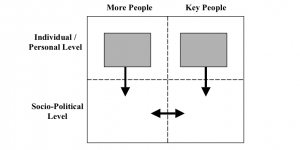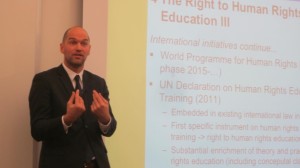By Rachel Cooper
Roma comprise the largest minority in Hungary and their presence in the territories dates back to around the 1300s. Throughout their history in what is present-day Hungary, they have faced great deals of discrimination in aspects of everyday life, including in health, employment, and education. Since 1993, the Hungarian government has made early childhood education a priority development area in its national education system. Since joining the European Union, Hungary has implemented several policies to increase the access of Roma to early childhood education, recognizing their historical marginalization within the education system. Inclusion in early childhood education is important for Roma children as they often face barriers in higher levels of education due to their typically low socio-economic status. Attempting to bridge these gaps as early as possible can have important positive implications for the educational attainment of Roma children in Hungary.
Pre-school was made compulsory in Hungary in 2011 and has been free since 1993 for children aged 3-6. The government provides support for poor families to encourage them to enroll their children. Before the start of the school year, economically disadvantaged families “are given double the monthly social allowance they are entitled to, so that they can afford to cover the educational materials for their children for the new school year”. Schools are also entitled to government funding for disadvantaged children, to cover educational materials and meals. 88% of children in Hungary are enrolled in a pre-school; for the Roma population, this percentage drops to 76. It should be noted that Hungary’s overall enrollment in early childhood education and Roma enrollment rates in early childhood education are far higher than its neighbors – Bulgaria’s rate is 45%, followed by Romania at 37%, the Czech Republic at 28%, and Slovakia at 24%; however this should not excuse the issue of access to educational services that are still apparent for Hungarian Roma.
Hungary’s higher rate of Roma enrollment does not signify that levels of equity are high, especially since 21% of Roma children attend pre-schools that are nearly completely Roma, and most non-Roma children attend schools that have zero Roma enrolled. Additionally many Roma are unable to attend pre-school due to a dearth of facilities. This is especially true in rural areas, where most Roma households live – in the 1993 Hungarian census the rural Roma population was measured at 60.5% of the total Hungarian Roma population. According to the Roma Early Childhood Inclusion Report of 2012, 29% of local governments have no kindergartens available, and these are predominantly in areas with Roma majorities. Although there are government provisions to provide subsidies to Roma families to encourage attendance, there have been reports of Roma not receiving this support due to local clerks discouraging Roma from applying because of local financial constraints. Furthermore, Roma families may not even know about the financial provisions to which they are entitled due to a lack of information channels.
On a broader level, Hungary has also been criticized for the measures it uses for the development of its early childhood education programs. Hungary’s National Roma Integration Strategy suggests the “development of early talent fostering, early childhood education and care” should be measured by PISA results, ignoring that PISA measures educational achievement indicators of 15-year-olds, and is irrelevant to measures that should be applied to children of pre-school age.
Interestingly, Roma girls are more likely to be enrolled in ECE than boys, with an 8% difference. This pattern is inconsistent with Hungary’s neighbors – the only other country to have a higher enrollment of Roma girls in pre-school is Romania, with 39% of girls and 36% of boys enrolled.
Hungary has been seen as a leader with regard to its Roma policies, and was one of the first countries in Europe to implement a system of protecting minority rights. In terms of ECE, Hungary has more experience and a longer history of integrating Roma children. The Roma Education Fund, a seminal organization focused on improving the status of Roma in Europe, has criticized Hungary not for its lack of inclusion efforts, but instead for measures that are too “overwhelming” for enactment at a local level. Essentially, initiatives have overloaded the system and have not provided enough space for proper evaluation and assessment of their effectiveness. Two of Hungary’s programs which have been deemed successful are: National Education Integration Network (Hungarian acronym of OOIH) and Step by Step schools.
Reports have been mixed regarding the quality of early childhood education in Hungary. The OECD finds that it has a “well-developed child-centered methodology” with content “focused on the acquisition of social and learning skills and fostering an interest in the learning process, rather than on direct teaching of literacy and numeracy”. The Roma Education Fund, Open Society Initiative, and others, have countered this positive overview, finding “the education system in general as being dominant and rigid”.
It is clear that Hungary still has a ways to go in terms of full integration of Roma in early childhood education, though it has made important strides. Government measures and policies exist to improve the situation; it is crucial that local governments and school districts are held accountable to all of their constituents and to recognize the equal rights of Roma to education mandated by law.
Rachel Cooper is currently a Program Manager at the SUNY Levin Institute.


